[Penny Dreadful: City of Angels Review with Joe Lipsett] "Santa Muerte" Juggles A LOT of Characters and Storylines
Each week, Joe (@bstolemyremote) and Terry (@gaylydreadful) review an episode of Showtime’s Penny Dreadful: City of Angels, alternating between our respective sites — queerhorrormovies.com and gaylydreadful.com.
S01E01 “Santa Muerte”: Los Angeles, 1938. Detectives Tiago Vega and Lewis Michener investigate a murder. Tiago's brother Raul battles Councilman Charlton Townsend over California's first freeway. Tiago's mother Maria pleads with Santa Muerte.
TERRY
I never knew I’d be writing about Penny Dreadful after its unceremonious cancellation at the end of Season Three. It’s a show that meant a lot to me, Joe, both as a horror fan and a queer person. Everything about it popped, from the Victorian setting and fog-drenched sets straight out of Hammer and Universal Monsters era films to the casting to the sexuality on display. It took everything I deeply loved about the classic monsters and updated them, viewing them through a queer lens.
So when I heard that Penny Dreadful was coming back in a new era and a new location, I was...well, cautiously optimistic. Incredibly happy that writer John Logan (Penny Dreadful, Skyfall, Gladiator) would return to the world he created, sure, but also worried that we were leaving the foggy streets of my wheelhouse for the sun-drenched world of Los Angeles and the loss of its identity.
But let’s dive in.
“There will come a time when the world is ready for me. When nation will battle nation. When race will devour race. When brother will kill brother. Until not a soul is left. Are you ready?” a woman says as we watch Chicano workers toiling in a field. The voice belongs to Magda (one of the many characters played by Natalie Dormer...more on that later) who, dressed in an almost pleather-looking gown, faces down her sister Santa Muerte (Lorenza Izzo). They’re mythical creatures that remain unseen to the human eye, but their argument leads to Magda walking the fields, fire flowing in her wake until all is consumed.
One of the victims is Tiago Vega’s father and many years later in 1938, Tiago (Daniel Zovatto) - now an adult - celebrates becoming a detective. He’s the first Chicano on the police force and his mother Maria (Adriana Barraza) is incredibly excited because that’s how progress is made: Tiago will help the next generation enter the police department, and so on. Tiago’s brother Raul (Adam Rodriguez) is less enthusiastic. One of the major issues standing between them is Tiago’s acceptance into the white-dominated culture while their home is going to be destroyed to build a new motorway. Raul is, obviously, unhappy about that. It’s an interesting dichotomy that addresses the good and the bad aspects of “progress.”
We follow Tiago on his first day on the job when he’s awakened early because of a “butchery down by the river.” He meets his partner, Lewis Michener (Nathan Lane) and immediately heads down to the ritualistic slaying. It’s a family of four dead and naked white people, placed just so in what looks like a cross. Their mouths have been slit into larger smiles, their faces have been painted to look like calaveras and their hearts have been removed. Further down the way, Mexican writing on the wall reads: “You take our heart. We take yours.”
While this is going on, we also follow Tiago’s mother Maria as she works as a servant for the Craft family, lead by patriarch Dr. Peter Craft (Rory Kinnear), a medical doctor who, in his spare time, leads a Nazi march through parks, espousing the idea that America should stay out of European affairs.
While this is going on, we also meet Councilman Townsend (Michael Gladis) who is in a fight with the Chicano community as he presses for the construction of the home-destroying motorway. This is the least interesting character for me because he is so mustache-twirling evil that he tells Raul Vega and the crowds at his town hall meeting to literally go back where they came from...which for a lot of them is LA. Later, alone with his yes-woman assistant Alex (also Natalie Dormer), he wistfully talks of Hitler (“now there’s a fellow who understands the judicious use of power”) while Alex rubs his temple and whispers encouraging words in his ears.
While this is going on…
I guess my point, Joe, and it’s becoming a long one, is that there is a lot going on. Right now, I’d almost say too much. It feels incredibly apocalyptic and EPIC in ways that Penny Dreadful didn’t immediately seem. But what it’s missing so far, for me, is the same charismatic set of characters we can follow while the action spirals out from them. In this way, somehow more than the constant sun, it feels very removed from the foggy streets of London. And I haven’t even discussed the intricacies of the rest of the plot of the first episode.
So before this turns into a dissertation, I’m tossing it to you, Joe (good luck). I think your interest in Penny Dreadful runs along the same lines as me but I’m curious of your opinions of the first one, particularly in reference to this new iteration. Are we onboard with Dormer’s multiple characters, one of which I didn’t even get to discuss? How do you feel about the murder investigation that’s just getting its start this episode? And...where is the queer!?
JOE
I have a similar relationship to the show’s original incarnation, Terry. I was a huge fan of the first run, in part because it felt like a fresh take on those classic monsters, but also because it was lush, expensive and gorgeously macabre. Oh, also, Eva Green was quite literally delivering the single best performance on TV every.single.fucking.year (and getting absolutely zero recognition for it). And then, just like that, the series was cancelled - because I don’t believe for a second that that was the ending Logan actually envisioned, regardless of what he publicly says.
So, yes, just like you, I was excited to have Penny Dreadful return, with Logan at the head. The move to America and the slightly more contemporary time period did give me pause, but then I heard Dormer was cast to play three roles and I saw those first stills of her in that jaw-dropping pleather dress and I was totally onboard.
One episode in and I’m a *touch* more reticent. Not because there’s a lot going on, which there is, though that was often the way of Penny Dreadful V.1, particularly early in the season. No, what’s giving me pause is this Los Angeles location. Oh sure, I’m feeling those Chinatown meets Who Framed Roger Rabbit? vibes, what with the motorway drama and the bodies in the aqueduct. What I’m not feeling is any sense of mood...or dread...or tension.
Quite frankly, Terry, this feels pedestrian. From Magda’s opening forecast of doom to the boring, slow-motion confrontation between police and the residents of Belvedere Heights, “Santa Meutre” falls along some pretty predictable plotting. This was more acceptable in the original series because there was a fascination with how the familiar characters were being repurposed and reimagined, how and when they would (or wouldn’t in some cases) interact with one another. Here the narrative is extremely straightforward, to such an extent that I would be surprised if anyone was surprised when Tiago was forced to shoot Raul in that climax.
I’m not suggesting that TV has to be surprising to be effective, but with so many disparate, but not exceedingly interesting storylines afoot, we’re not exactly getting much insight into these characters, which would be the saving grace for sticking to predictable developments. Take Detective Lewis, who is a thorny, complicated character who stands up for Tiago against racist colleagues, but is very clearly not an ally. It’s has the potential to be a great role for Lane, who has been pigeonholed in recent years as the wisecracking, loudmouth queer. But with so many balls in the air, “Santa Muetre” barely has time to dig into Lewis, so he doesn’t pop.
The same can be said for nearly every character. Dormer is playing three roles and I couldn’t tell you the names of two! I barely knew if Mateo (Jonathan Nieves) and Josephina (Jessica Garza) were brother and sister or boyfriend and girlfriend (it’s the former, by the way). Only Tiago truly gets a decent amount of time, but he’s - dare I say it - a typical boring protagonist and, at least in this opening hour, Zovatto simply doesn’t have the screen presence, charisma or engaging character to anchor the series.
It’s a mixed bag, albeit one with plenty of potential. It all depends on what comes next. For now, this is a lot of place setting, and even the things that should be taboo and thrilling, like secret Nazis infiltrating LA, feels...undercooked (I saw that in Agent Carter folks, and that series was waaaaay more fun). I just hope we don’t spend half of the season moving pieces around the board, because there isn’t enough here to satisfy right now.
Terry, are you concerned about how predictable these storylines are? Will you miss Rodriguez, or are you hopeful it means more screen time for folks like Piper Perabo (!) as Rory Kinnear’s alcoholic wife? And are you, like me, most intrigued by Dormer’s third character, Elsa, the German housewife to an abusive American Jew who absorbs her son into her stomach? And did I miss the amazing Kerry Bishé (playing someone named Sister Molly) or are the iMDb credits just messed up?
TERRY
Joe, I have the benefit of watching the first two episodes so I can tell you that you absolutely did not miss Kerry Bishé as Sister Molly because she's introduced in episode 2. We'll be there soon.
Offline I mentioned that it was a mistake that they didn't do a two episode premiere and it's because of a lot of the issues that you mention. This episode has a lot of heavy-lifting to do as it introduces the disparate storylines and as a result, we’re not getting any real information or personality from the characters. I’m hoping that things will slow down just a tad so we can get to know them. It’s frustrating because the thing that worked so well in Penny Dreadful was the characters and while I’m not willing to write off the character work in this iteration yet, I hope Logan is ready to pull out the stops and create memorable people.
I do share your fear that the season will be about moving our very real chess pieces around a board, with the push/pull of Santa Muerte and Magda at the center. I'm not opposed to this push and pull, but I need there to be an interesting reason behind it and, so far, City of Angels hasn't delivered on that.
The only interesting thematic imagery I keep holding onto is this idea of heart. “Santa Muerte” has a very heavy hand in introducing this theme but I’m curious if it’ll go anywhere. We have the ritualistic murders removing the victims’ hearts (“You take our heart. We take yours”). At one point, Maria Vega invokes Santa Muerte who is irritated she’s been summoned and tells Maria, “I have no heart to give man.” Tiago, it’s revealed, literally has a handprint over his heart from where Santa Muerte touched him as a child. And in a conversation with Raul, Tiago is asked, “where is your heart?” Will this go anywhere? I hope so…
Honestly, the most interesting aspect of “Santa Muerte” is the setup between Elsa, Dr. Craft and Piper’s Linda Craft. Watching Magda as Elsa slowly inserting herself in Dr. Craft’s life is such a small scene, but it hints at bigger things to come. I’m curious to see how far this simulacrum will worm its way into the Craft household. The insidious way Elsa uses the idea of an abusive Jewish husband to the Nazi-loving Dr. Craft who is also dealing with an alcoholic wife (who, I’m gathering is not German?) could lead to some juicy drama down the road.
But back to you, Joe. What did you make of the Always Sunny-style map in Lewis’s home, seemingly mapping out the rise of Hitlerism? Did you like the way Tiago was wearing a tan suit in the finale, which felt color-coded with his Chicano family? And what are you hoping for in the next few episodes?
JOE
It’s interesting that you mention Tiago’s tan suit in that final showdown, because I was actually half worried that he was just going to be shot because he wasn’t in a uniform. If City of Angels were exploring a Black American experience, I have no doubt that he would have been caught in the crossfire and we would be down one protagonist.
Lewis’ map is interesting if only because it offers a brief glimpse into his interests (shades of the character work that we’re both hungry for), but the iconography is also so reminiscent of crime procedurals that I was almost taken out of the show. I think I’m too used to seeing this kind of crime board in narratives where serial killers are the main focus.
With that said, I am fascinated by the series’ obsession with “progress.” It’s not exactly subtle, but the idea of expansionism that underlines nearly all of these storylines is quite intriguing, particularly when you consider that City of Angels is very deliberately telling a Mexican and Chicano story. There’s something incredibly uncomfortable (by design) about the way that Tiago, Raul and the other residents Belvedere Heights are fighting for their homes and their history, but Townsend fails to see them as anything other than obstacles to his aspirations for higher office. The Nazis are the same: they don’t even see the residents of Los Angeles (more broadly speaking); their interest in the city is almost metaphorical in that it exemplifies the New World that Hitler aims to create in his image as WWII looms on the horizon.
What intrigues me, then, is where Magda, in her all-black villain outfit and desire to sow chaos, fits in? As you elaborated on above, Terry, that scene between Santa Meutre and Maria confirms how disconnected - and disinterested - Santa Meutre (and by extension Magda) are in the lives of humans. The obvious reading is that all human disagreements are petty and mean nothing to the higher powers, a fact that is reinforced in the final sequence when Magda instigates the murder of dozens of men simply because she can. But I can’t help but wonder: does this make Magda merely one of the series’ titular Angels...or are she and Santa Meutre its true villains?
Perhaps we’ll get some clarity in the coming weeks as Penny Dreadful: City of Angels introduces new characters and presumably explores the fall-out of the shoot-out. We’ll catch up with all of the drama of “Dead People Lie Down” at QueerHorrorMovies next week.


![[Penny Dreadful: City of Angels Review with Joe Lipsett] "Santa Muerte" Juggles A LOT of Characters and Storylines](https://images.squarespace-cdn.com/content/v1/5b39608d75f9eef54c62c3f0/1587933129868-UIP9NG8I7AGGB61FXOK9/1+oJEQFBMWl8u0Cjz-PzgLmw.jpeg)








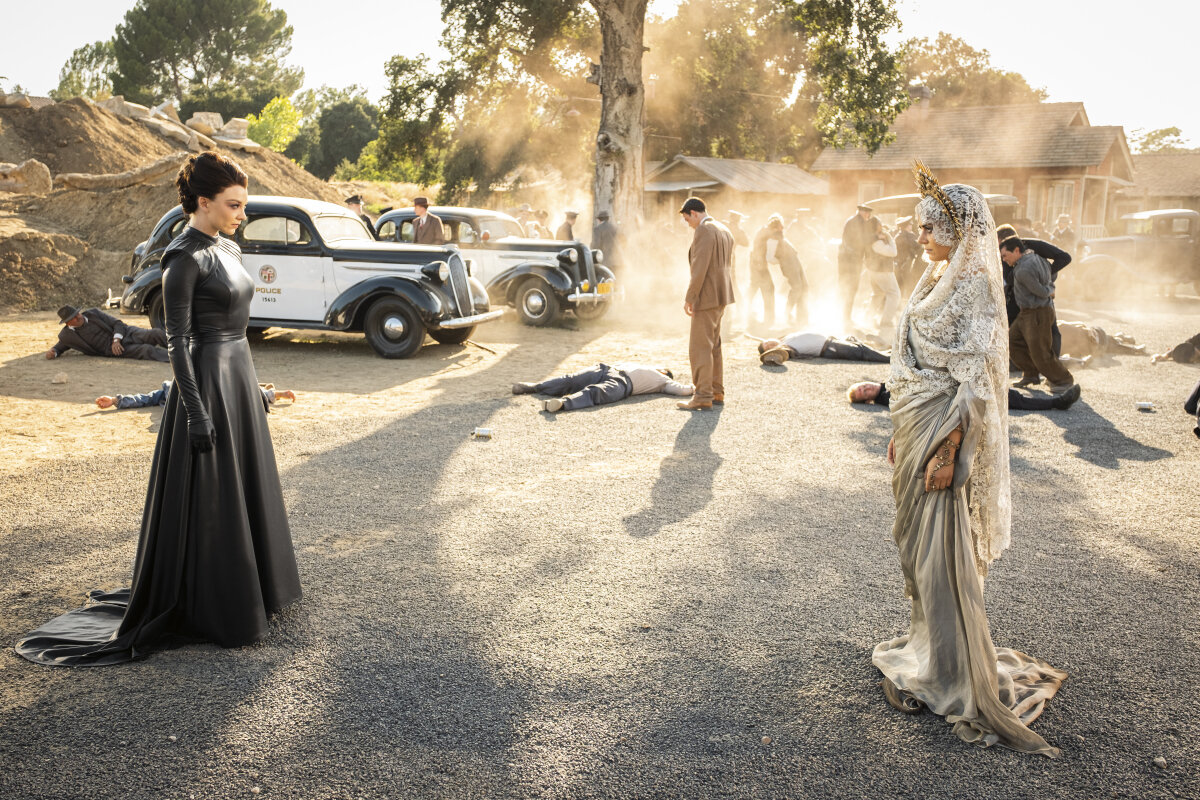
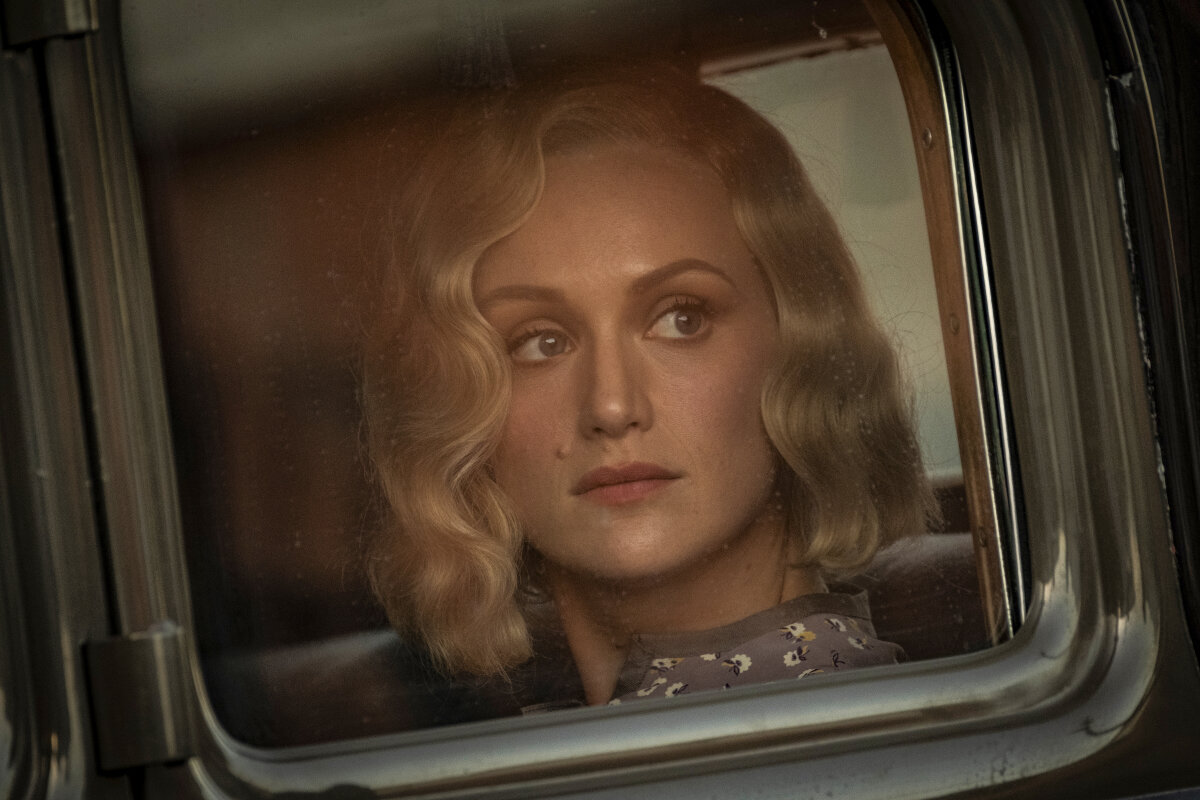
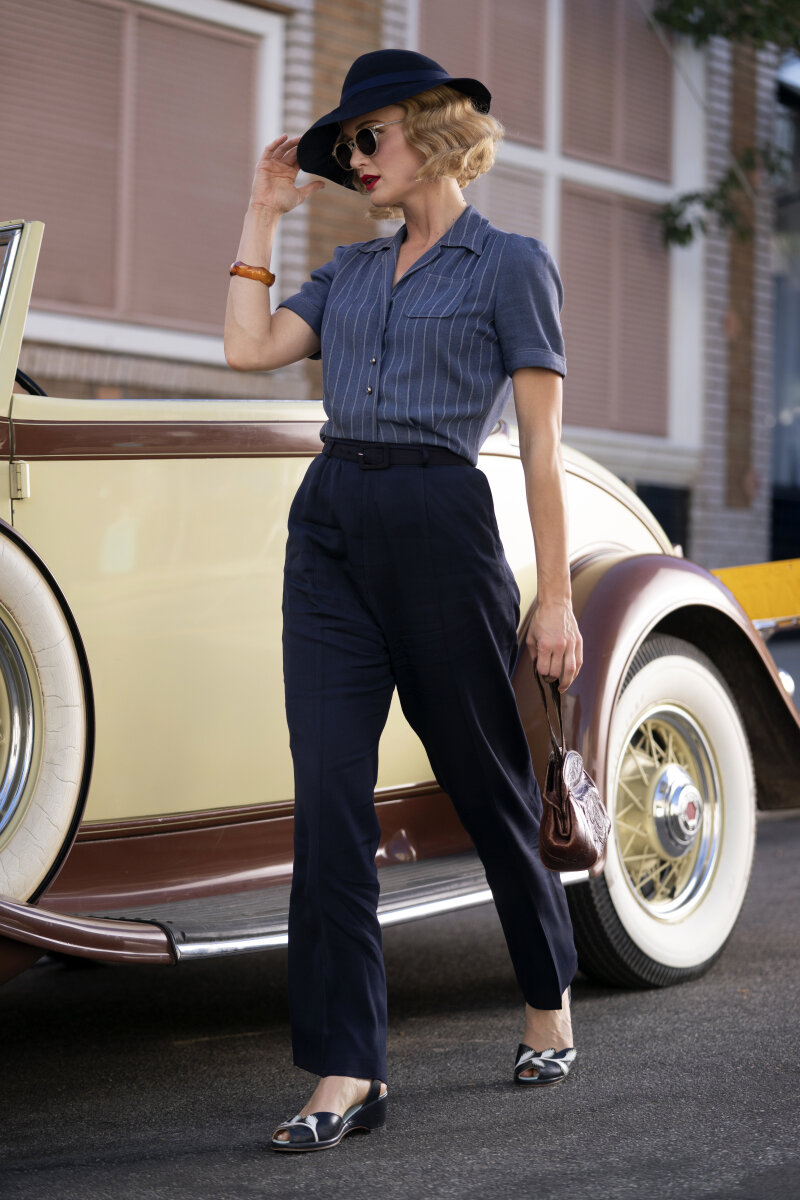
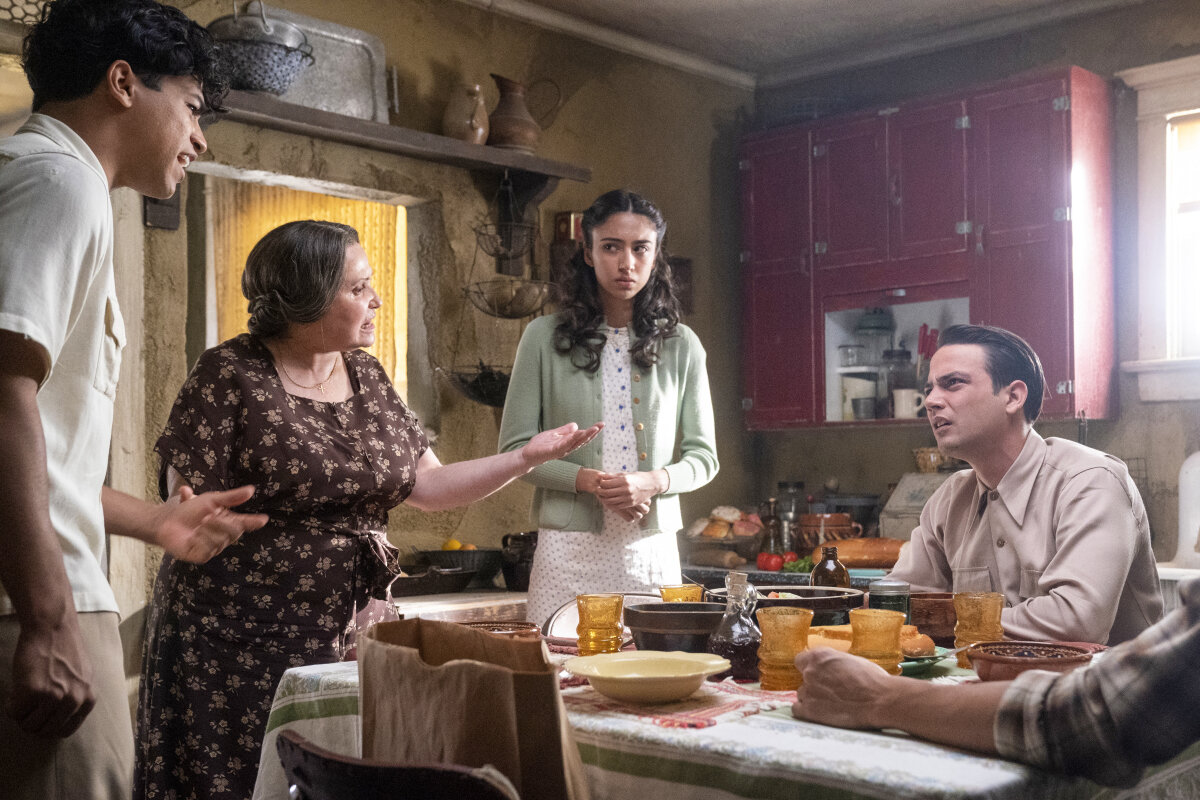
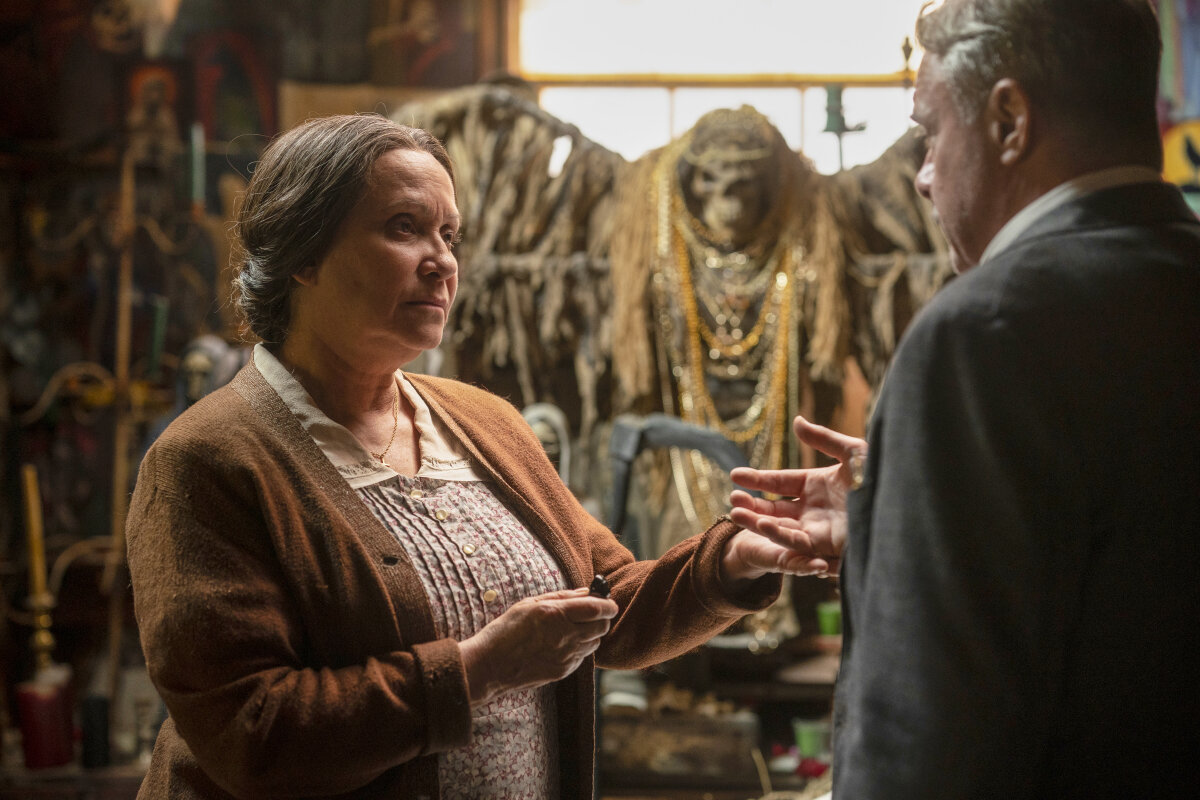
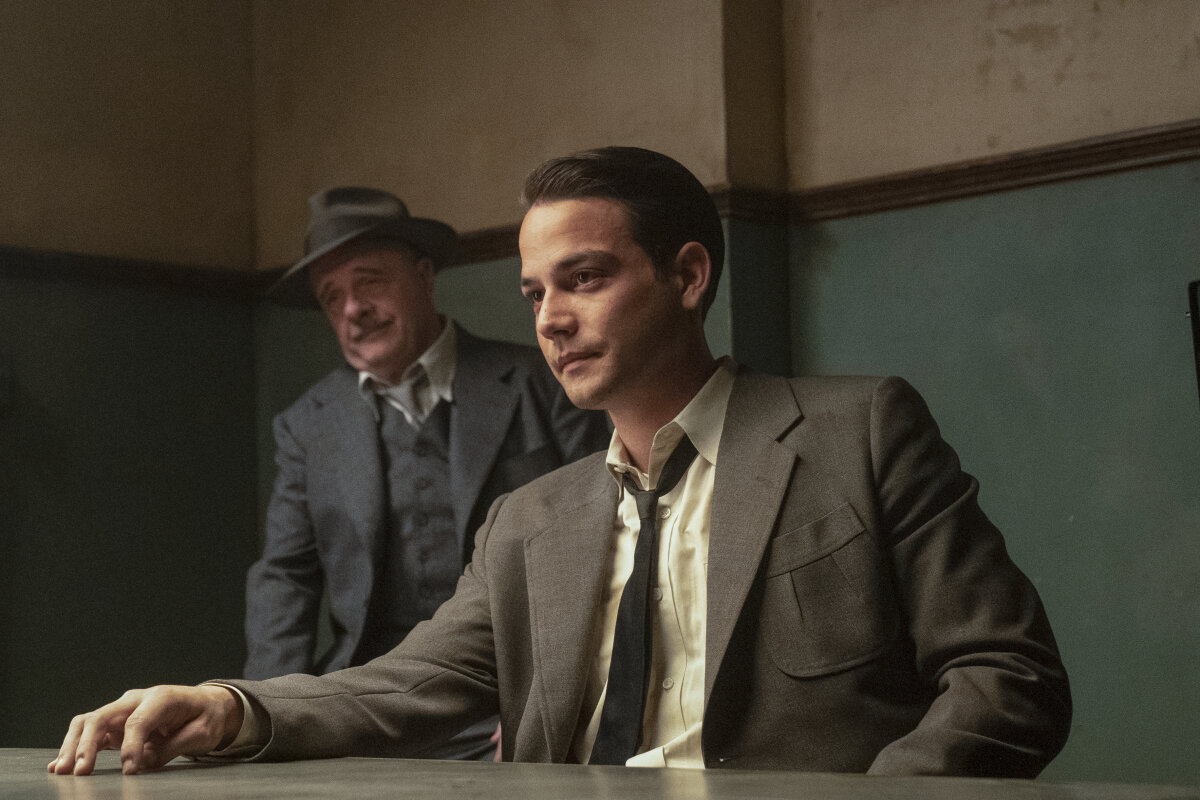
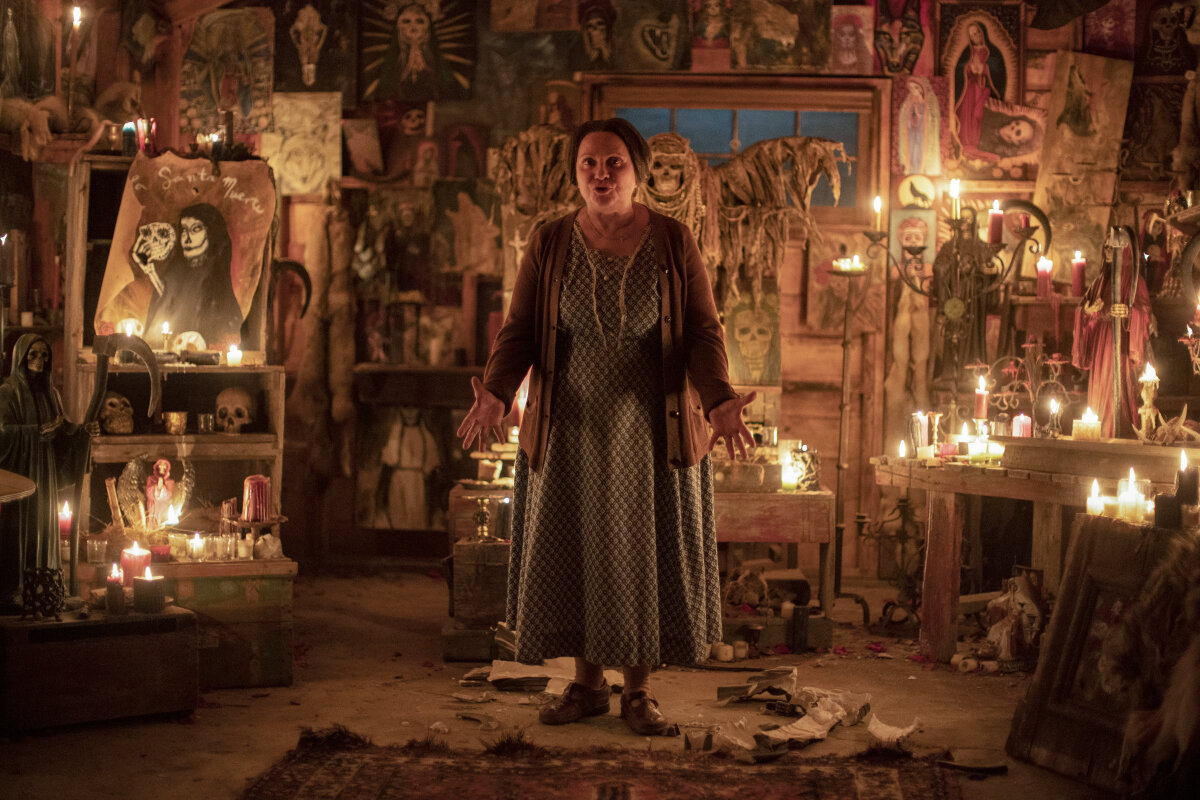
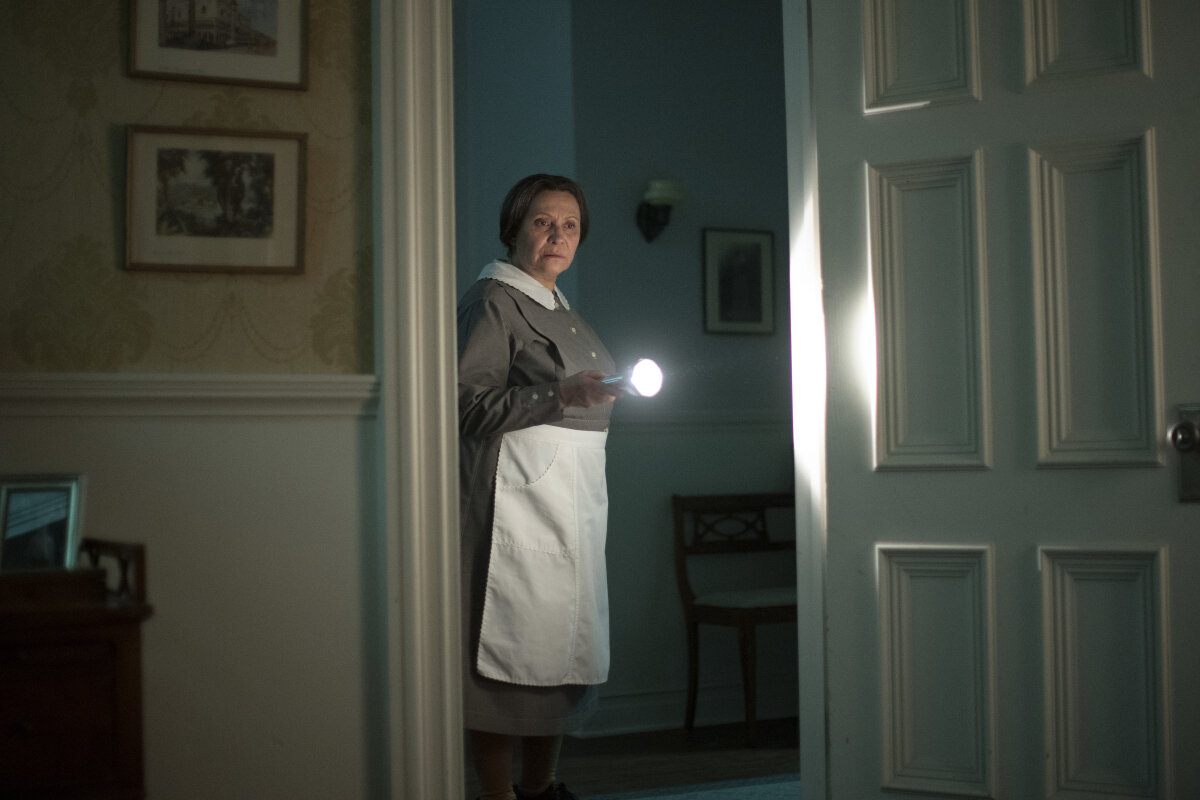
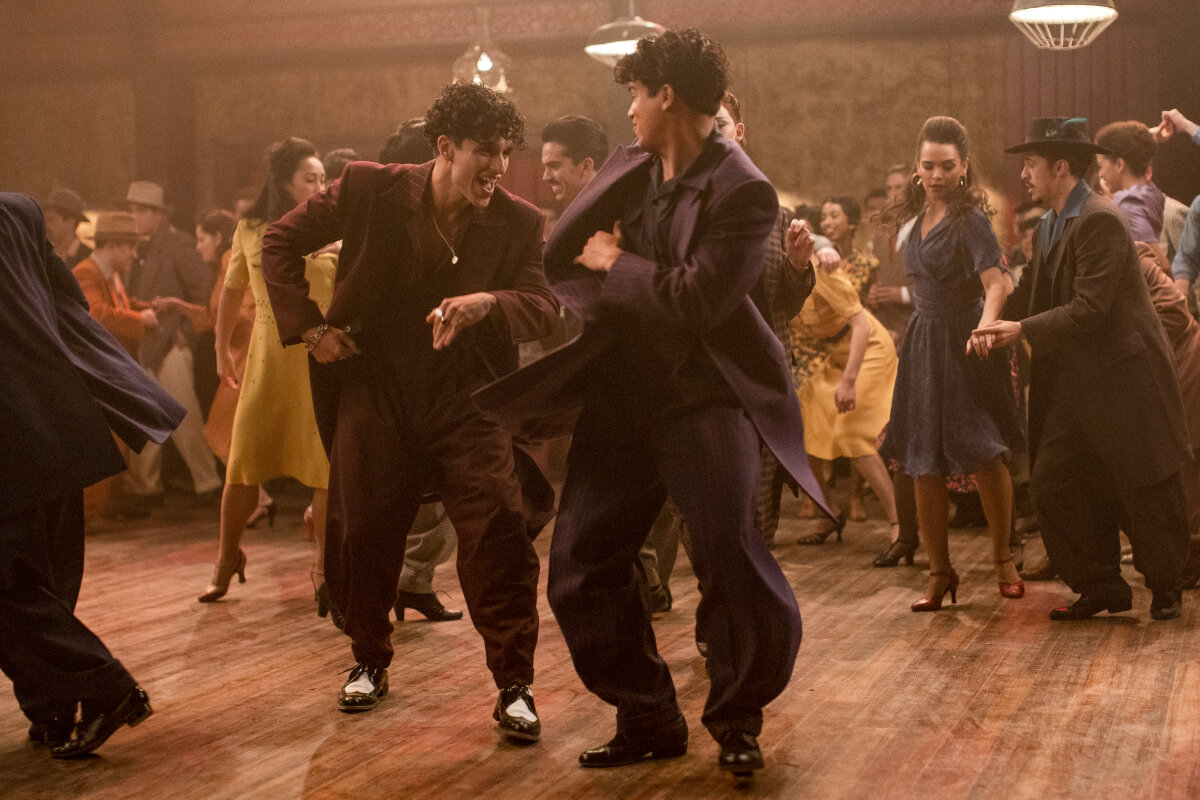
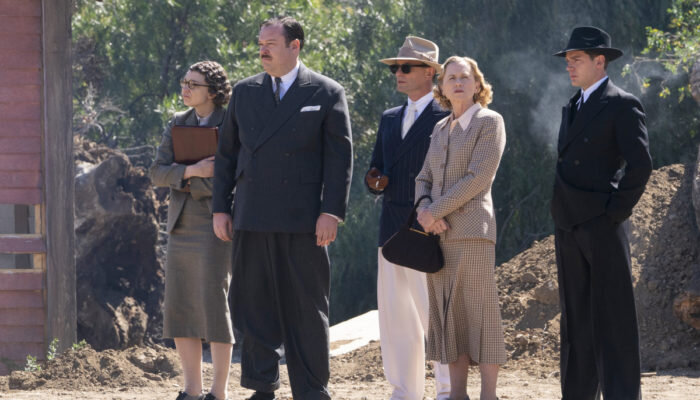
![[Tribeca 2020 Review] 12 Hour Shift is the Right Mix of Black Comedy and Shocking Violence](https://images.squarespace-cdn.com/content/v1/5b39608d75f9eef54c62c3f0/1587955739628-QDGFBPYK5357859FEHWQ/12+Hour+Shift+-+Poster+1.jpg)
![[AYAOTD? Recap with Erin Callahan] Season 3 Episode 7 "The Tale of the Carved Stone"](https://images.squarespace-cdn.com/content/v1/5b39608d75f9eef54c62c3f0/1587695854612-Z30V88CCCBDRECOFFX9E/3.7+Carved+Stone.jpg)
![[Penny Dreadful: City of Angels Recap with Joe Lipsett] 1.03 "Wicked Old World" Thrills with Fantastic Characters and Deep Stakes](https://images.squarespace-cdn.com/content/v1/5b39608d75f9eef54c62c3f0/1589150413201-50EVM6WISD06D7ADRQ22/PennyDreadful_COA_403_8330_R.jpg)
![[Penny Dreadful: City of Angels Recap with Joe Lipsett] 1.05 "Children of the Royal Sun" Gets Sexy with Mixed Results](https://images.squarespace-cdn.com/content/v1/5b39608d75f9eef54c62c3f0/1590364309774-1PCBW34M7TD8EE013YV2/PennyDreadful_COA_405_1201_R.jpg)
![[Penny Dreadful: City of Angels Review with Joe Lipsett] 1.07 "Maria and the Beast" Showcases Adriana Barraza's Immense Talent!](https://images.squarespace-cdn.com/content/v1/5b39608d75f9eef54c62c3f0/1591574810336-6X72NWGTUPIQK3YYLIZE/PennyDreadful_COA_407_4749_R.jpg)